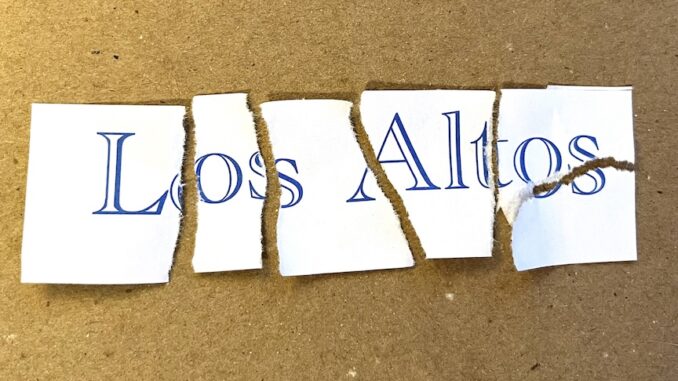
BY BRADEN CARTWRIGHT
Daily Post Staff Writer
Los Altos City Council on Tuesday night will pick a map to divide the city into five districts, with a council member elected from each one.
Council is moving away from its citywide elections to avoid a legal battle against Malibu attorney Kevin Shenkman, who claimed the city was violating the California Voting Rights Act and threatened to sue.
Rather than risk spending millions of dollars in a lawsuit, council decided to switch to by-district elections, with a deadline of Oct. 31. The city hired a demographer, Redicstricting Partners, to come up with five maps to choose from. Each district will have about 6,333 residents.
Council members will vote on a map tomorrow night and make a couple other important decisions, like whether candidates have to live in a district when they file paperwork to run.
Under state law, candidates would be required to live in their district if they get elected. But they’re not required to live there before the election unless Los Altos imposes a special requirement, Deputy City Manager Jon Maginot said in a report for council.
Council will also decide which two districts are up for election in 2026, and which three districts are up for election in 2028.
The shape of the districts in south Los Altos have already been decided, maps show. The district furthest to the south — District 5 — will include the Highlands neighborhood and Grant Park.
District 4 includes Marymeade Park, McKenzie Park, Heritage Oaks Park, Blach Intermediate School and Oak Avenue Elementary School, maps show. The bulk of District 4 is between Covington Road and Fremont Avenue.
The remaining three districts are still taking shape. Two maps have a district that stretches from El Camino Real to downtown Los Altos, and another map keeps downtown and the civic center in the same district.
The city is responding to an April 18 letter from Shenkman saying the city’s current election system discriminates against Asians, who make up 37% of the city’s population.
Asian representation has been “sparse at best” in the last 20 years, Shenkman said.
Attorney Kimon Manolius told council that he is unaware of any cities that have fought Shenkman and prevailed.
The cities of Santa Clara and Palmdale paid $4.5 million in lawsuits. Modesto paid $3 million, and Anaheim paid $1.1 million.
“They’re difficult cases. They’re extensive cases,” Manolius said.
Residents and council members aren’t happy about the switch. Currently, all residents get to vote to put five people on council over two years. With districts, each person will only get to vote for one council member every four years. That reduces the voting rights of residents by 80%. They’re worried that having council members elected from districts will make candidates harder to find and pit council members against each other based on geography.
“This is terrible for the city,” Mayor Jonathan Weinberg said in May.
“We do not want to do this,” Councilwoman Neysa Fligor said.
“It’s really giving me a sick to my stomach feeling,” Vice Mayor Pete Dailey said.

Where is the Asian district in Los Altos?
District elections…this is what you get with a one-party system in California. So funny when Shenkman says, “Asian representation has been “sparse at best” in the last 20 years. Asian representation??? Let me see, when I was a youth in school, we were taught not to judge people by race, but by who they were as people. Then why is it as adults the Democrats insist that if a politician is not the same race as the community, they can’t represent that community. Hmmm. So lets say I had an all white community and a black man ran for city council. Should those white people not vote for him since he does not “represent” them??? I think that would be called racism. So sad to see what the Democrats have done to our state. Let the cream rise to the top and lets vote for people who we think are going to do the best job for our community, regardless of race.
“This is terrible for the city,” Mayor Jonathan Weinberg said in May.
“We do not want to do this,” Councilwoman Neysa Fligor said.
“It’s really giving me a sick to my stomach feeling,” Vice Mayor Pete Dailey said.
Would love to know how many of these council members are Democrats. Tried to do a search,but cannot find. Would also be interesting to find out how many residents also object to district elections who are Democrats. Have to laugh a bit…You reap what you sow.